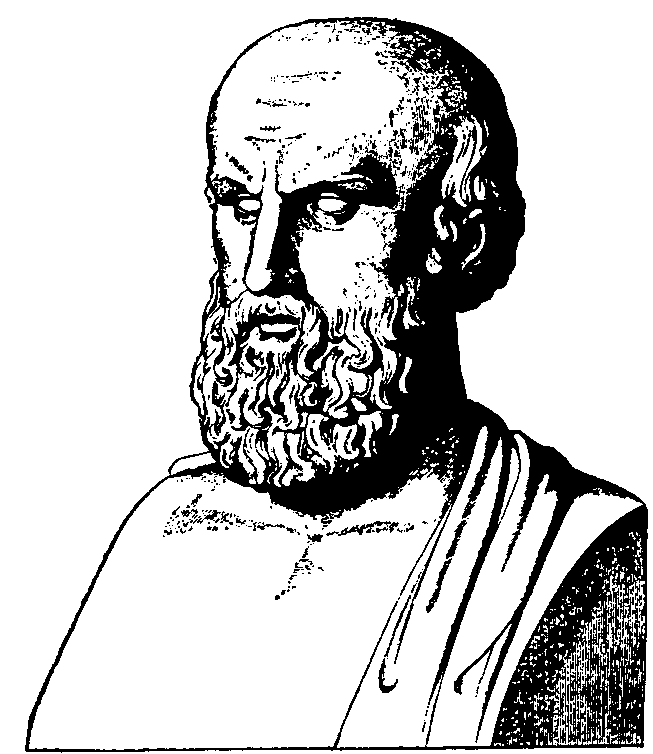|
Dictionary: Search the Dictionary Browse the Dictionary |
|
Timeline: Launch Interactive Timeline |
| Return to Front Page |
| AESCHYLUS | |
Deprecated: Function split() is deprecated in /www/www-ccat/data/classics/myth/php/tools/dictionary.php on line 64 The earliest of the three great tragic poets of Greece, son of Euphorion. He was born at Eleusis, near Athens, B.C. 525, of an old and noble stock, fought at Marathon, Salamis and Plataeae, and in his 25th year appeared as a writer of tragedies and rival of Pratinas and Choerilus, though he did not win his first victory till 488 B.C. About 476 he lived in Sicily, at the court of Hiero of Syracuse, and composed his Aetnoeans for the consecration of the city of Aetna, founded by that king in the place of the ancient Catana. On his return to Athens he was beaten by the young Sophocles with his very first play, but vanquished him again the next year with the Tetralogy of which the Seven against Thebes formed a part. After the performance of his Oresteia, B.C. 459, he quitted home once more, perhaps in disgust at the growing power of the democracy; and after three years' residence at Gela in Sicily, was killed, says one story, by an eagle dropping a tortoise on his bare skull. The inhabitants of Gela buried his remains, and honoured them with a splendid monument. At a later time the Athenians, on the motion of the orator Lycurgus, placed a brazen statue of him, as well as of Sophocles and Euripides, in the theatre; by a decree of the people a chorus was granted for every performance of his plays, and the garland of victory voted him as though be were still living among them. His tragedies, like those of the other two, were preserved in a special standard copy, to guard them against arbitrary alterations. His son Euphorion was also an esteemed tragic poet, so was his sister's son Philocles and his descendants for several generations. (See TRAGEDY.) The number of Aeschylus's plays is stated as 90, of which 82 are still known by title, but only 7 are preserved: (1) The Persians, performed in 473 B.C., was named from the chorus. Its subject was the same as that of Phrynichus' Phaenissae, the defeat of Xerxes at Salamis, but was differently treated. (2) The Seven against Thebes, part of a Tetralogy, embracing the cycle of Theban legend, of which Laius and OEdipus formed the first two pieces, and the satyric drama Sphinx the conclusion. (3) The Suppliants, the reception of Danaus and his daughters at Argos, evidently part of another Tetralogy, and, to judge by the simple plot and its old-fashioned treatment, one of his earliest works. (4) Prometheus Bound, part of a Trilogy, the Prometheia, whose first and last pieces were probably Prometheus the Fire-bringer and Prometheus Unbound. Lastly, the Oresteia, the one Trilogy which has survived, consisting of the three tragedies, (5) Agamemnon, the murder of that hero on his return home; (6) The Choephoroe, named from the chorus of captive Trojan women offering libations at Agamemnon's tomb, in which Orestes avenges himself on Aegisthus and Clytaemnestra; and (7) The Eumenides, in which Orestes, pursued by the Furies, is acquitted by the Areopagus at Athens. This Trilogy, composed B.C. 458, and probably the last work exhibited by Aeschylus at Athens, gives us an idea of the whole artistic conception of the poet, and must be looked upon as one of the greatest works of art ever produced. The style is marked by sublimity and majesty, qualities partly attributable to the courageous and serious temper of the time, but chiefly the offspring of the poet's individuality, which took delight in all that is great and grand, and loved to express itself in strong, sonorous words, an accumulation of epithets, and a profusion of bold metaphors and similes. His view of the universe reveals a profoundly philosophic mind, so that the ancients call him a Pythagorean; at the same time he is penetrated by a heartfelt piety, which conceives of the gods as powers working in the interest of morality. However simple the plot of his plays, they display an art finished to the minutest detail. His Trilogies either embraced one complete cycle of myths, or united separate legends according to their moral or mythical affinity; even the satyric dramas attached to the Tragedies Stand in intimate connexion with them. Aeschylus is the true creator of Tragedy, inasmuch as, by adding a second actor to the first, he originated the genuine dramatic dialogue, which he made the chief part of the play by gradually cutting down the lyrical or choral parts. Scenic apparatus he partly created and partly completed. He introduced masks for the players, and by gay and richly embroidered trailing garments, the high buskin, head-dresses, and other means, gave them a grand imposing aspect above that of common men; and he fitted up the stage with decorative painting and machinery. According to the custom of the time, he acted in his own plays, practised the chorus in their songs and dances, and himself invented new dance figures. |
|
|
|
|
| Pictures and Media | |
| AeSCHYLUS. (Rome, Capitoline Museum.) |

|
|
Copyright 2000-2020 Peter T. Struck. No portion of this site may be copied or reproduced, electronically or otherwise, without the expressed, written consent of the author. |